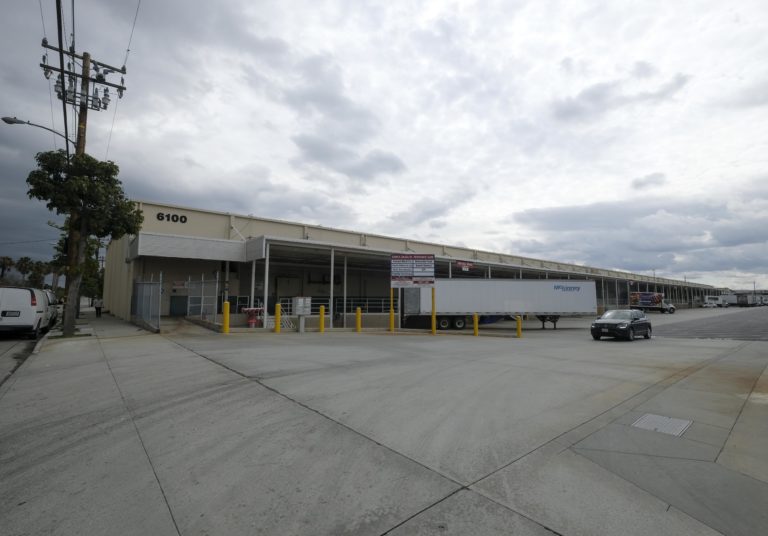
These large refrigerated warehouses that preserve perishables at specific temperatures were already needed before the pandemic to meet the rise in online shopping and consumers’ expectations that goods arrive quickly at their doorsteps.
Now, with more people staying home, buying meal kits and ordering take-out, there’s more need than ever for cold storage industrial properties.
According to a September report from Jones Lang LaSalle Inc., online food sales are up nearly 85% in the past year, leading not just to a need for more cold storage space but to facilities that are closer to population centers.
Demand, experts say, has surged in the last six to nine months.
“What’s driving this is the ecommerce phenomenon that’s been accelerated due to Covid,” CBRE Group Inc.’s Art Rasmussen Jr. said. “The demand is consistent with what we are seeing across the country. We have very limited supply of actionable cold storage.”
That’s especially true in big cities with ports or high agricultural production.
“Southern California benefits from all three of these,” JLL Managing Director Tim O’Rourke said. “We have the largest ports in the U.S. We have over 22 million people in Southern California, and we have the great Central Valley, which is one of the No. 1 agriculture producers.”
Dated facilities
Dated facilities
More than 78% of the properties in the United States were built before 2000, according to JLL. O’Rourke said the same is true for cold storage space in L.A.
Although some new product is being developed, it is expensive to build and is not often done on a speculative basis, or without a tenant in mind.
Some existing properties are being converted into cold storage space. O’Rourke said he has seen some conversions where a box is built within an existing warehouse as a fridge or freezer space with four new walls. But steep costs are a factor for conversions as well.
Nationwide, construction costs for a new cold storage or freezer space average $130 to $180 per square foot, compared to $70 to $90 per square foot for a dry warehouse, according to JLL.
And it is more expensive to build in the West than in other areas of the United States.
Santa Monica-based Dedeaux Properties has been in the cold storage business for many years.
Stephen Summers, the company’s director of asset management, said Dedeaux has done both ground-up construction and renovation projects, such as the L.A. Food Center, a nearly 267,000-square-foot cold storage distribution facility in Vernon.
“It’s really difficult to build a spec cold storage building because each customer has a different set of temperatures they need,” Summers said.
Different temperatures require different air conditioning units, roof structures and slabs, making it tricky to build before securing a tenant.
One of Dedeaux’s builds, for example, was for a produce company that needed nine different temperature zones. Summers said those specifications would have been impossible to do without identifying the tenant ahead of time.
Dedeaux often works with a joint venture partner on cold storage facilities, and Summers said that despite the initial cost of building these properties — they can run up to three times the price of a dry warehouse — and roughly six months of extra construction time, he has found it to be “a good area for us to compete in.”
O’Rourke added that it can take two to three years to build any property in Southern California. That, coupled with the cost and specialized needs of tenants, means not many developers will do it on spec.
But that could change.
Rasmussen said he’s involved in a cold storage spec project in Texas and expects more of them in the future, including in L.A., in the next 18 months.
“For the first time, we are really talking to developers about speculative cold storage,” he said. “This was never built on spec before because of the space. … It’s not a highly understood niche, and sometimes developers don’t want to take the risk,” he said.
‘Demand for more’
‘Demand for more’
“There’s definitely demand for more” cold storage space, O’Rourke said, adding that public refrigeration warehouses that are not leased to any one company are often at full capacity.
Companies including Dedeaux Properties are interested in doing more with cold storage.
The company recently finished a cold storage facility for a client in Vernon that has sold.
“There’s a lot more demand for cold storage than say 10 years ago and demand for newer product. A lot of the product in Los Angeles is older, less efficient and unable to hold the needed temperatures,” Summers said.
He added that companies now want to be able to maintain temperatures as goods move from truck to warehouse to delivery.
Older buildings, he added, have less-
Brentwood-based Rexford Industrial Realty Inc. owns some cold storage facilities already and “would continue to grow in that sector,” said Co-Chief Executive Howard Schwimmer. “We’ve actively been pursuing a few different opportunities.
Summers added that Dedeaux likes “that product type and continue(s) to focus on it as opportunities come up,” seeing it as “a growth area for the company.”
